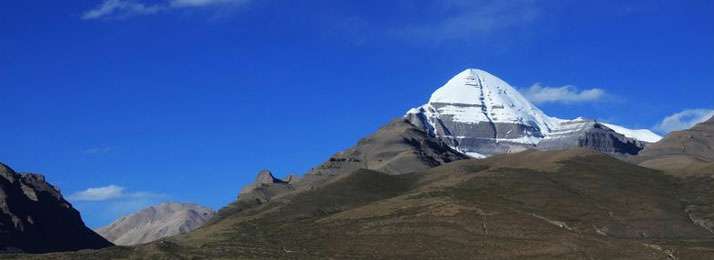
The name for Mount Kailash (Sanskrit name) in Tibetan is Khangrinpoche or Khangkartisi that literally means Precious Jewel of Snow, it is the origination of four major rivers in Tibet and those are Tachok Khabap, Senge Khabap, Mapcha Khabap and Langchen Khabap and in English those are Ganges, Indus, Sutlej and Brahmaputra respectively. Apart from the major river there is another river also originally comes from the Kailash area called Karnali that flows from Langa Lake run towards east part of Tibet.
Kailash is a sacred mountain for four faiths: Hindus, Buddhists, Jains and followers of the indigenous Tibetan religion of Bön.
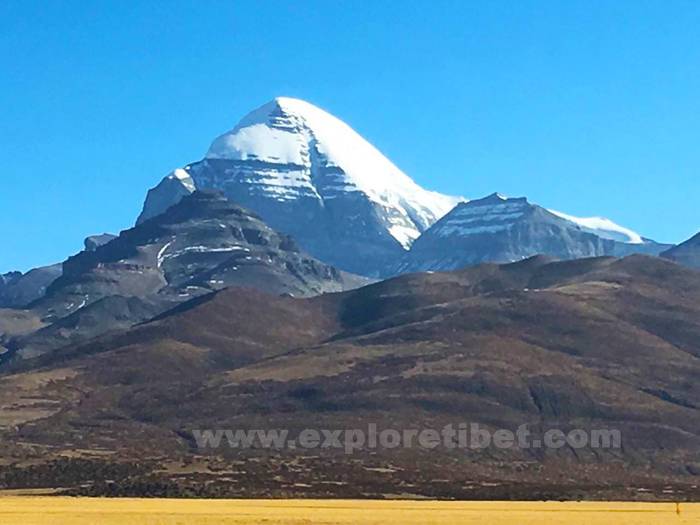
For Buddhist, they believe that Kailash is the home of the Buddha Demchok (also known as Chakrasamvara), who represents supreme bliss. It was on this sacred mountain that Buddhism displaced Bön as the primary religion of Tibet by having a competition between Milarepa and Naro Bonchung..
According to legend, Milarepa, champion of Tantric Buddhism, arrived in Tibet to challenge Naro, representative of Bön. The two magicians engaged in a great sorcerous battle, where Milarepa defeated Naro by riding the sunray and reached the summit where Naro was ride on a magic drum.
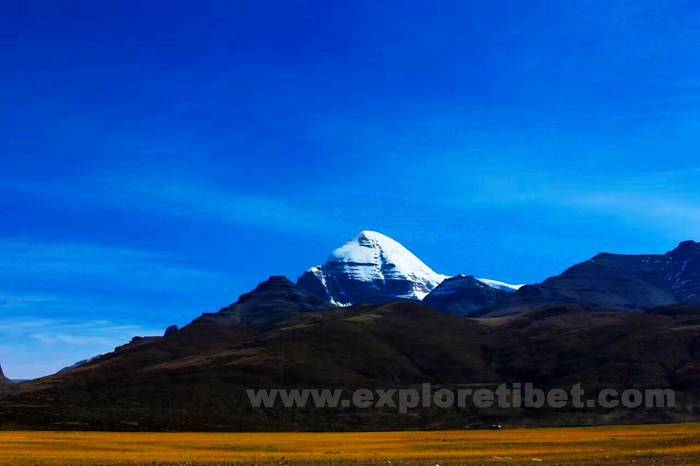
For Hindus, Holy Kailash is home for many god and goddess, especially Shiva Ji (the god of destructions and regenerations).In Jainism, Rishabhadeva emancipated on holy Kailash and who is the first saint in Jainism. In Bon religion, the Yungdruk Gutse (nine-stacked Swastika mount) where the founder of Bon religion called Sherab alighted.
Base on beliefs of the four religions, doing Kailash Kora (circumambulating the holy mountain) washes the sins and bringing good fortunes for everyone, Indians call it Kailash Yatra. However, making circulation around the holy mountain that Tibetans call it Kora, there are two types koras which is inner circuit and outer circuit, but mostly the outer kora (circuit) is the focal points of hundreds pilgrims and travelers. While when Buddhist and Hidustan make their pilgrimage around the holy peak in clockwise direction, the Bonpos (Bon believers) and Jainism do it in the opposite way. Normally, the outer circumambulation covers 52km and encounters two passes in the route, general travelers take three days to complete the circumambulation but devoted Tibetan pilgrims complete in one long day, even some Tibetan pilgrims used to make their kora by prostration all the way around which at least needs ten days.
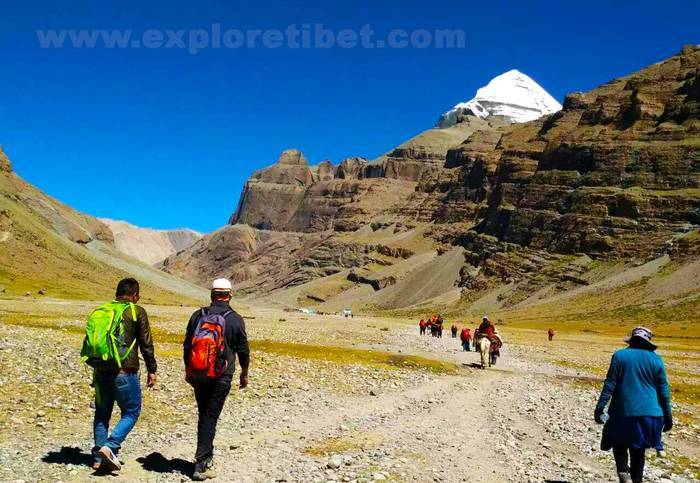
The Kailash tour or pilgrimage start and end at Darchen, it was a small nomad hamlets with only few families but now it is naturally developed into a small town with full of guesthouses and shops to meet the demands of increasing pilgrims and travelers from worldwide, it is the place where people used to spend a night before the circumambulation and prepare for their Yaks and porters for the Kailash trekking, then the trekking starts in clockwise and the small track lead you through a deep valley, the first stop will be at a nomadic place called Tamding, after several kilometers of walk you will find the Dira monastery situates on the left hand side with a river flowing in the center and it is the first overnight stop. Then second days starts with blooming sunshine from Dira monastery leads to the toughest two passes above 5000m, climbing up the Dikpa La (5000m) lead to the next pass called Dolma La (5600m). Trekking around 18km you will find the second days stop at Zuktul monastery and the next day will be an easy day without any climbing and get back to Darchen in the afternoon.
After finishing the circumambulation of the holy mountain, people will make prayers in front of the most sacred and mystical views of the Mt. Kailash.
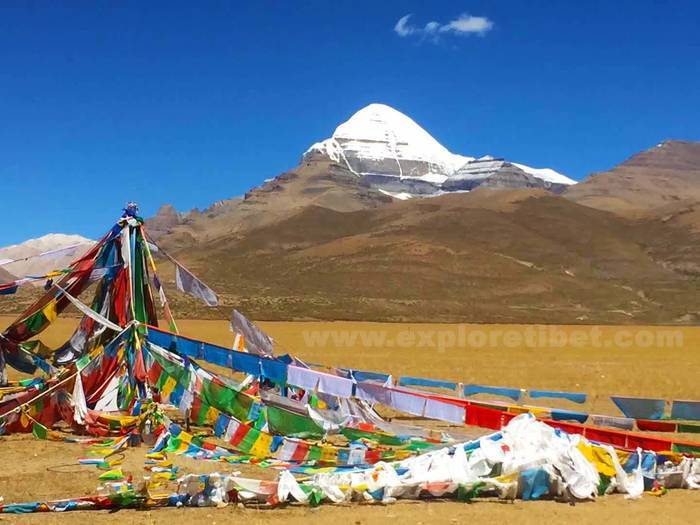
One of the most interesting time to doing the Kailash tour is during the Saga Dawa festival, Saga Dawa is a important month long religious periods for Buddhism believers as they believes the Lord Buddha had carry out all his important life events in that month, according Tibetan lunar calendar, Saga Dawa is the forth lunar months and it usually falls in the month of June but it changes based on the Tibetan Lunar calendar counting system. During the festival, hundreds of pilgrims and travelers gather at the Darboche and conducts a multi-religious ceremony by changing a new prayer pole, Darboche is a small spot the encounters on the first day of trekking, it holds a special value in the mythical story of the Mt.Kailash and the prayer pole symbolizes the prosperity and blessing of religion to all the sentient beings. Though the time of month will be very crowd but you will find interesting ritual activities and insight experience of the Tibet by interacting with lovely devoted grannies and yogis.
